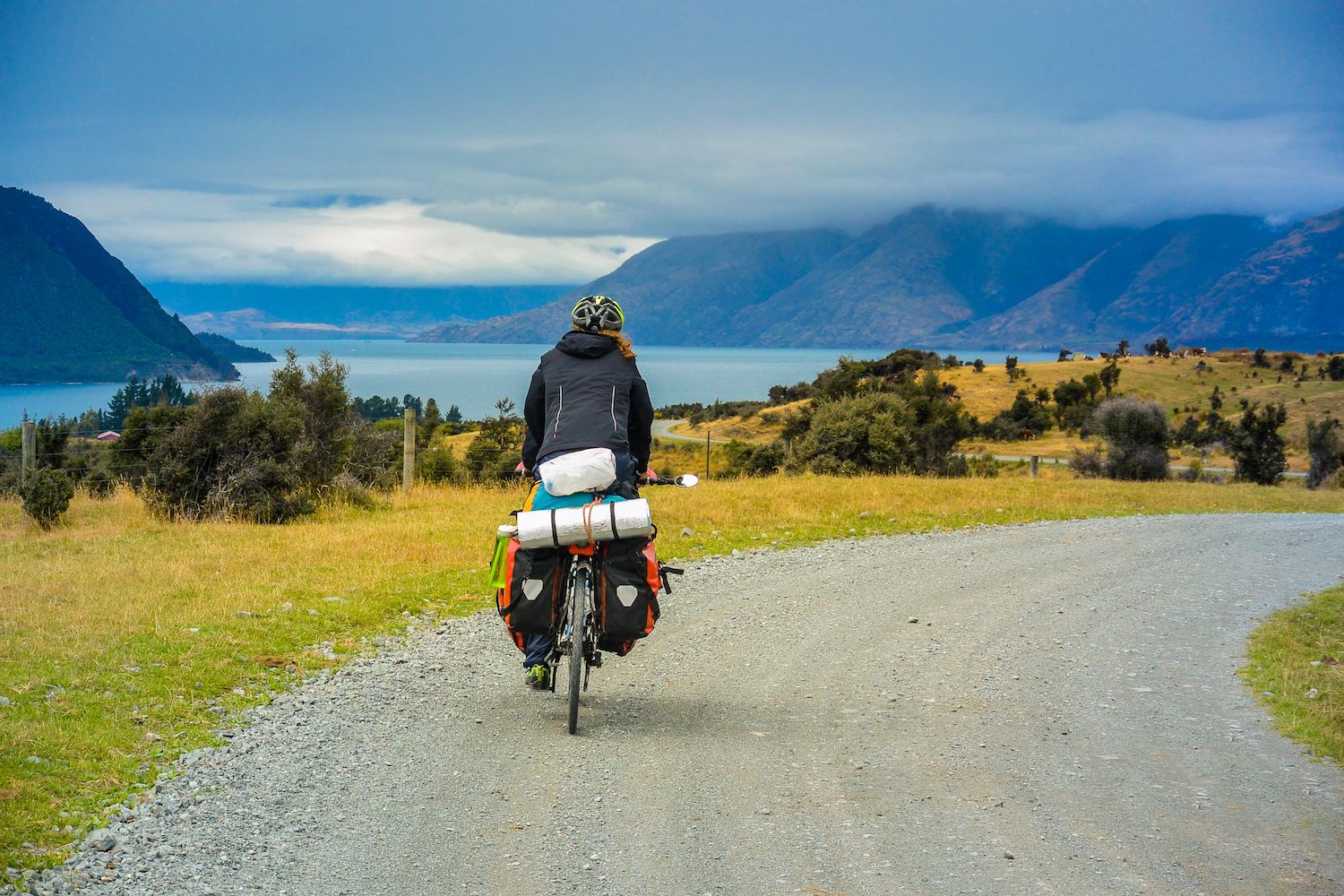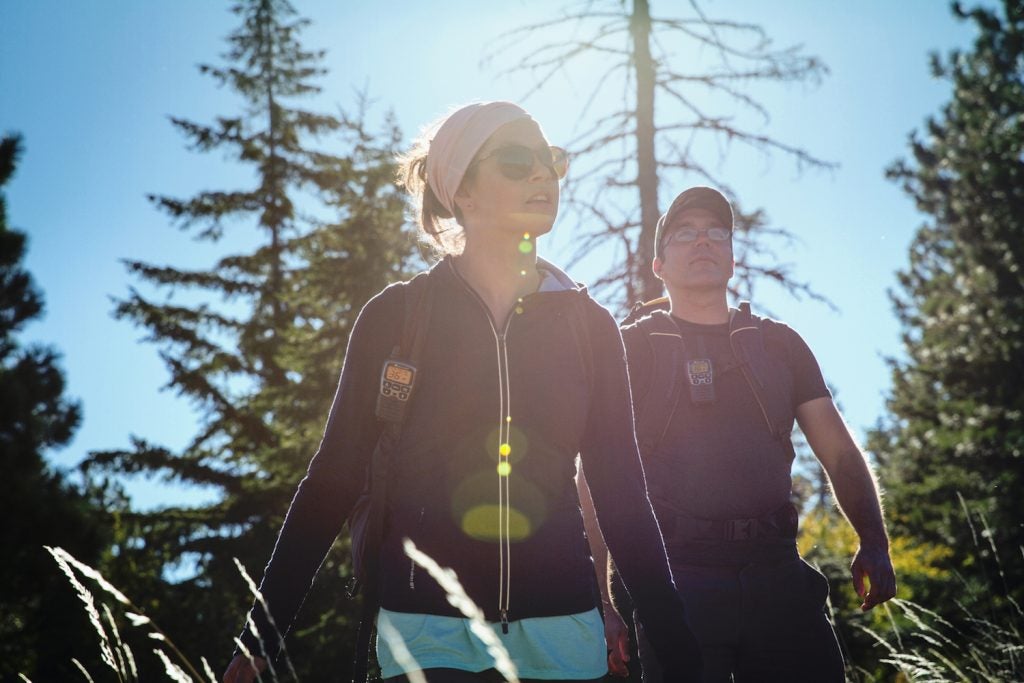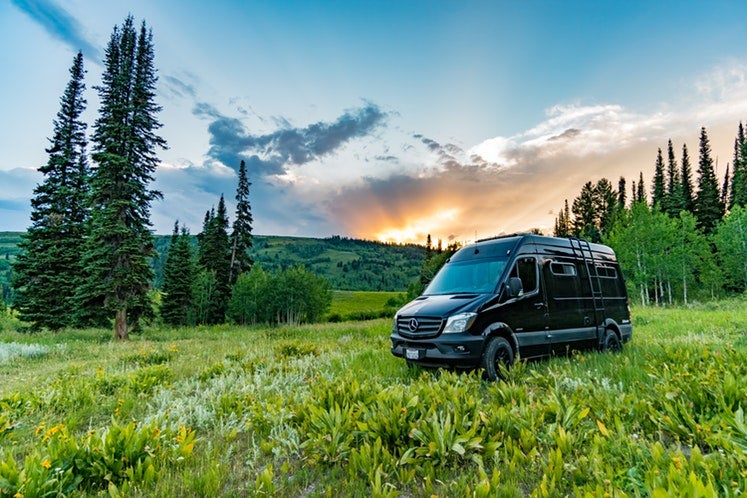This article was brought to you by our friends at INNO Racks, makers of proven products that help cyclists get out and go. INNO bike carriers are designed to go the distance with you, whether you’re taking the kids to the park or riding off into the sunset on a serious bikepacking expedition.
Bikepacking and bicycle touring are much more common in Europe, where the distances between countries and destinations are less daunting and bike culture is the norm. So it makes sense that it was a trip to Austria that inspired bike commuter Jenny Park to take her daily ride even further, and introduced her to this unique way of exploring not only foreign capitals but rural communities and wild places. That trip along the Danube transformed Jenny Park’s idea of where two wheels could take her, and eventually lead to her current position as the Tennessee State Director for The Trust For Public Land.
One of the side effects of an increasing number of people adopting both outdoor recreation and bike commuting is that bike touring and bikepacking have gained a new level of popularity here in the States, too. Bike touring is typically defined as cruising on pavement between destinations with all your gear stored in saddlebags called panniers, that hang on each side of a wheel. Bikepacking pushes the concept a little further, blending aspects of bike touring, mountain biking, and backpacking for off-road, self-supported forays over dirt roads and rougher terrain.
Both are wonderful ways to take your adventure further with the freedom to explore on ground level, covering more distance and likewise discovering the details that make a place unique.
That’s what Jenny Park discovered as her cycling journey unfolded. The more she pedaled, the more she became curious about how we can make communities stronger by making them friendlier to cyclists— not only in big urban areas, but in the wilderness, too.
Bikepacking with Jenny Park and the Trust For Public Lands
For close to a decade, Jenny has worked in the outdoor industry as well as city and regional planning. Today her work with the Trust For Public Lands is helping transform the southeast into a friendlier place for cyclists. We flagged her down to chat about how she got started on this path, what makes bikepacking so magical, and how cycling impacts communities from big cities to tiny rural towns.
The Dyrt: How did you get into cycle touring and what led you to start on these longer rides?
Jenny: I was a bike commuter for years, and had done a few long rides, but I took the plunge into bike touring because I won a trip. Specifically, I won a Danube Bike Path tour from biketours.com, which I imagine is the easiest entry into bicycle travel. The Danube tour was incredible; amazing scenery, friendly people, my favorite wine, and excellent little inns. Even though the route was not particularly challenging, it was a very empowering experience to know that I had gotten myself across a country on a bike. Ever since that trip, bike tours have been in my regular vacation rotation. Not too long afterward, I got involved with Adventure Cycling Association, eventually joining the Board of Directors.
What is it like going on a bike tour for you? What kind of planning and preparation goes into getting ready for a trip?
It depends so much on what I want to get out of the trip with the distinguishing characteristics being either relaxation or adventure. On the relaxation side, I’ve done European tours that included inns and luggage transport, and were basically a really wonderful vacation. In the U.S., I usually plan my own routes and camp.
The thing I love about bike touring is that you can completely scale it to the experience you want to have. I like a bike tour to have some physical challenge, but I don’t want to be miserable or have to race against the clock every day just to make it to my destination before nightfall.
Route planning is fun; if it’s an Adventure Cycling Association route, I’ll order maps because I am a paper map person. Otherwise, I’ll check Ride With GPS and look for blog reviews of the route.
How do you think camping from a bike is different from, say car camping or backpacking?
You have to be super strategic. Everything in your panniers must be needed; otherwise, it is just weighing you down and making the journey harder.
Is traveling by bike in foreign countries, or even just new places in the U.S., different from other ways of experiencing a place and getting a sense of it? How so?
You experience your surroundings with all of your senses, and at a speed at which you can take those surroundings in. Traveling by bike is also a great conversation starter with the locals; people want to know where you’re coming from and what your experience has been. Sometimes they’re extra kind because they feel you are doing something challenging and worthwhile.
“You experience your surroundings with all of your senses, and at a speed at which you can take those surroundings in.”
What has your experience been like bike touring as a woman, and especially as a woman on solo trips?
Great. On a bike, the things I most love about being in a foreign place are heightened. A few of the tougher things about being alone, like having a man follow you, or getting catcalled, or (in some foreign countries) shopkeepers being aggressive, become non-issues on a bike. You’re moving slowly enough to appreciate a place, but have the ability to get away from situations that are uncomfortable. I haven’t had issues so far, but I do feel safer and more empowered on a bike than just walking on my own. I’ll note that I never ride with earbuds in; it’s important to be aware of your surroundings, whether you’re on a busy road or a quiet bike path.
What advice would you offer to someone going on his or her first bike touring or bikepacking trip?
Think about what you want to get out of your trip and scale it to that. If you have friends who have done bikepacking or bike touring, do an overnight trip with them just to get a feel for it. Adventure Cycling Association has a great how-to section that teaches the basics of bike travel.
Trying any new sport or activity can be a little intimidating, especially if there is a lot of new gear and lingo. It’s hard when you don’t know what questions to ask. Do you think cycling has those barriers more or less than other activities like, say, rock climbing or skiing?
Those barriers do exist, but bicycling for the purpose of touring is a lot less specialized than many of those other activities. Sure, if you want your ride to be the fastest or most efficient, you need to invest, but bicycling in itself is a relatively simple pursuit that requires forethought — but not a ton of gear.
One thing I think of is Bikecentennial, when 4,000 Americans spent the summer of 1976 riding across the country on the Trans-America Trail to commemorate the bicentennial. That event spurred the U.S. movement of bicycle travel as well as the establishment of Adventure Cycling Association. When you look at photos from that summer, everyone is riding a steel-frame (heavy) bike with no special jerseys and very limited gear.
So, I think there are plenty of ways to make do with a more simple setup, but we’re accustomed to having the special tools and bike shorts and chamois cream, etc. I think the best way to break through the intimidation factor is to do some basic research, and if you have the luxury, talk to friends who know the drill. But aside from that, just do a trip. You learn what you actually need pretty quickly.
What is your favorite bikepacking trip you’ve been on?
All of them hold unique spaces in my memory. I think my Danube Bike Path trip will forever live in my memory as my favorite because it was my first bike tour, and because it happened at a truly pivotal stage in my life. One of my other favorites was a 3-day tour from Chattanooga to Atlanta on U.S. Bicycle Route 21. One hundred people or so were on the ride, but I teamed up with two of my friends who had helped create the route. It was incredible to go from familiar to new landscapes all while moving toward a city I’d visited by car dozens of times. We ate lunch at little country restaurants and somehow made it through the 95-degree afternoons to our campsites. The sense of community on the ride was strong, and this was a great experience on an organized (vs. self-guided) tour.
What destinations are on your cycling bucket list?
Jenny: I keep hearing about the Balkans, so they’re at the top of my list. In the U.S., I want to do the Great Allegheny Passage and C&O Canal path, which connects Pittsburgh to D.C., and I’d like to do more biking in Idaho as well. The 4 Rivers Bike Path in South Korea is also on my list— it’s a 600 km path connecting Seoul to Busan, with great camping facilities along the route, but that one doesn’t exactly work with my vacation schedule.
You’re with the Tennessee Trust for Public Land now, after working for the City of Chattanooga, the Regional Planning Agency, and Outdoor Chattanooga. How did cycling and bikepacking influence your interest in public lands and city planning?
Cycling (in the commuter sense) is what got me into city planning. I’d spent a bit of my early twenties living in Asia and Europe, and I got very accustomed to life without a car. In those places I lived, being car-free felt like a blessing, whereas in much of the U.S., it creates challenges. I saw the opportunity for Chattanooga to develop in a more bicycle- and pedestrian-friendly way and wanted to be a part of that. Eventually this led me into parks and greenways planning, and the idea that parks can be democratizing spaces. I joined the Trust for Public Land as the Tennessee State Director in December 2017, and I get to work on completing parks and greenway projects throughout the Chattanooga region. We’ll soon have 25 miles of connected greenway in Chattanooga, which in itself presents opportunities for a local bicycle travel experience.
Conversations about urbanism, city planning, and daily commutes have turned more and more towards the bicycle in the U.S. You’ve been super involved in helping Chattanooga become a more bike-friendly town. How do you think that growing sense of urban bike culture is spilling over into rural areas and wild spaces?
I hope conversations about transportation options do lead more people to think about other ways to travel, such as bicycle tourism. Aside from the sustainability element, I want people to have richer travel experiences, where they feel connected to the landscape and communities through which they’re traveling. Rural communities especially benefit from bicycle tourism, because the routes tend to be on quiet, country roads. There’s a beauty in spending time in places that are feeling forgotten.
You can win free gear from INNO Racks and 19 other outdoor brands by reviewing campgrounds on The Dyrt. Share past camping experiences, photos, and videos to earn points towards monthly prizes in The 2018 Great Camping Giveaway!
The Dyrt is the only camping app with all of the public and private campgrounds, RV parks, and free camping locations in the United States. Download now for iOS and Android.Popular Articles:
Articles on The Dyrt Magazine may contain links to affiliate websites. The Dyrt receives an affiliate commission for any purchases made by using such links at no additional cost to you the consumer.



